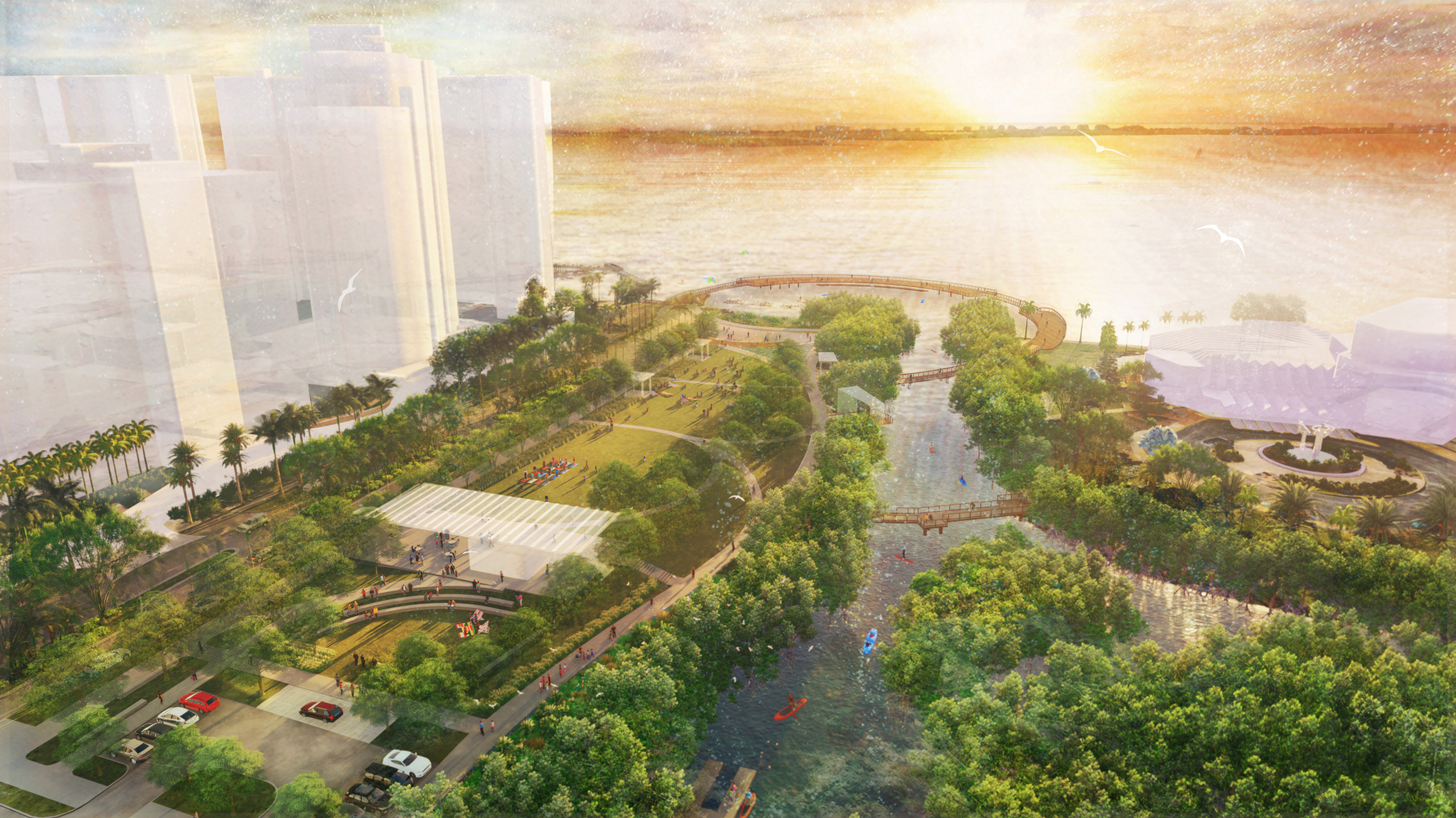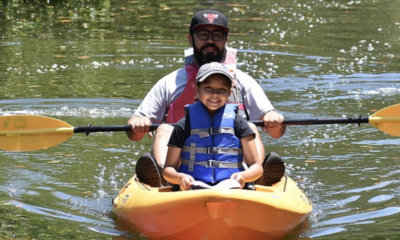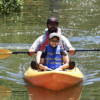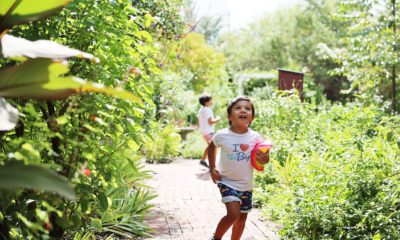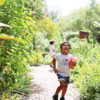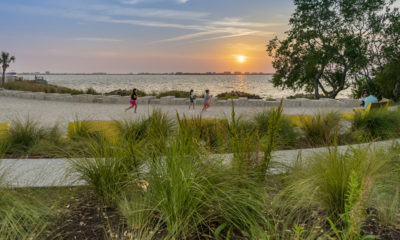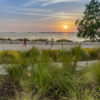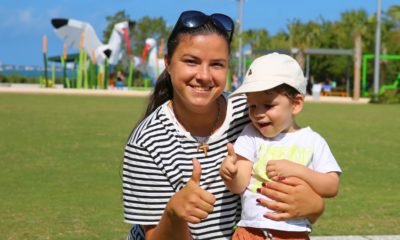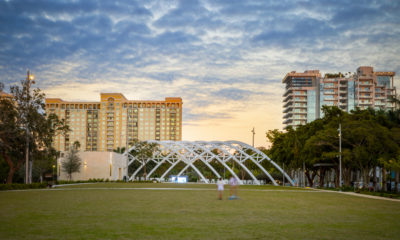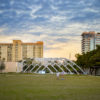Timely Topics
The Bay park project clears a small hurdle in Sarasota
Phase 1 plan includes a one-acre lawn and ‘sunset boardwalk’
NOTE: This article was originally published by Herald-Tribune on September 16, 2019.
Supporters of The Bay project were so jubilant after a Sarasota City Commission vote Monday that it took a police escort to convince them to take their party outside chambers at City Hall, so that the regular meeting could continue.
Leaders of the Bay Park Conservancy had rallied support from local foundation and nonprofit executives who gave endorsements at the afternoon presentation — what amounted to an update on recent tinkerings with the Phase 1 concept, coupled with a request for the city’s go-ahead to begin work on a detailed site plan. This first section of the park is on the nine-acre strip of land that borders Boulevard of the Arts, at the southernmost end of the 53-acre waterfront property.
Commissioners were unanimous in clearing the project to take its next steps, which will include community workshops, two public hearings and a stop at the city’s Planning Board before returning to them. The Bay’s chief implementation officer, Bill Waddill, said the application process should take about nine months, with a possible groundbreaking in late 2020. This portion of the park could open, he said, 24 to 30 months from now — a sort of down payment on a 20-year buildout.
Among changes to the park design since July, in response to both neighbors’ input and new information:
• The idea of narrowing Boulevard of the Arts west of the Tamiami Trail to two lanes, to slow traffic and create more green space, has been abandoned because residents on the south side of the street were concerned about access, safety and an existing tree canopy. As a result, the two-acre lawn will be closer to one acre.
• More parking spaces were added to accommodate food vendors and kayak launchers, although most parking will remain to the north of the bayou, near the Van Wezel Performing Arts Hall.
• As a result of the lawn’s narrowing, restrooms and a food service pavilion were moved from Boulevard of the Arts to the east end of the lawn, which is on higher ground and will offer a sunset view.
Among community leaders who heaped praise on the project was Nate Jacobs, founder and artistic director of the West Coast Black Theatre Troupe. He spoke of Sarasota’s need for a public space closer to Newtown, where all city residents can feel comfortable convening.
“Where this park is located, it’s less intimidating,” he pointed out. “So it could be a catalyst to bridge our very segregated community.”
As on previous occasions, residents of Condo on the Bay, which would overlook the new park, voiced reservations about the plan. But while some said they still believe the circular pier — now branded as a “sunset boardwalk” — should move farther north, they seemed appreciative of the recent modifications. Their objections to the boardwalk range from a fear that it will harm their water views, to questions about car traffic to the boardwalk’s southern entrance and its distance from the Van Wezel parking lot.
The neighbors have been calling for a traffic study, which will be part of the site-planning process.
A.G. Lafley, founding CEO of The Bay, said it takes four minutes, at a “slow walk,” to travel from the farthest point of the Van Wezel parking lot to the end of Boulevard of the Arts, where the circular pier will be. He also addressed neighbors’ qualms about traffic by assuring them that the high-intensity sectors of the park will be farther north, where another walkway over the water should attract more visitors.
But he took advantage of the discussion about access to put in a plug for the notion of a pedestrian overpass that spans U.S. 41, between the bayfront and the Rosemary District.
“We sincerely would like to test one or try one,” he said. “It’s worth a try; there’s a cost there, but we’re willing to bear some of that burden.”
Lafley also told commissioners that with $11.5 million of the $20 million needed for Phase 1 already collected from private donors, he is confident that it can be completed without a need for public tax increment financing — details of which still need to be worked out with Sarasota County.
Paul Orofino, a 17th Street resident, said he wished the city would finance the $300 million-plus park upfront by selling bonds, as the county is doing with the Legacy Trail — instead of spreading the cost over 20 years.
“The problem is that lot of the seniors can’t wait that long,” he said. “Let’s try to get this done so we can all enjoy it.”


